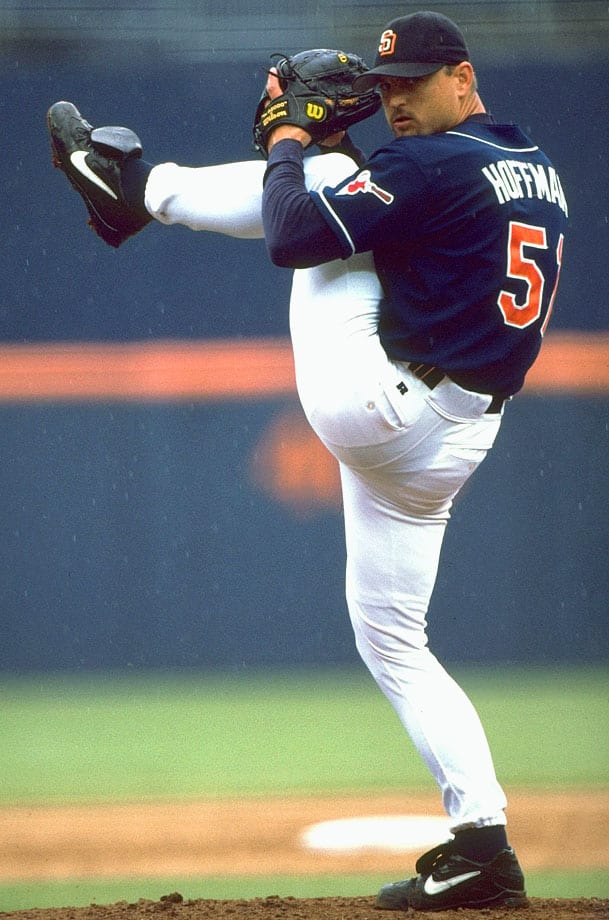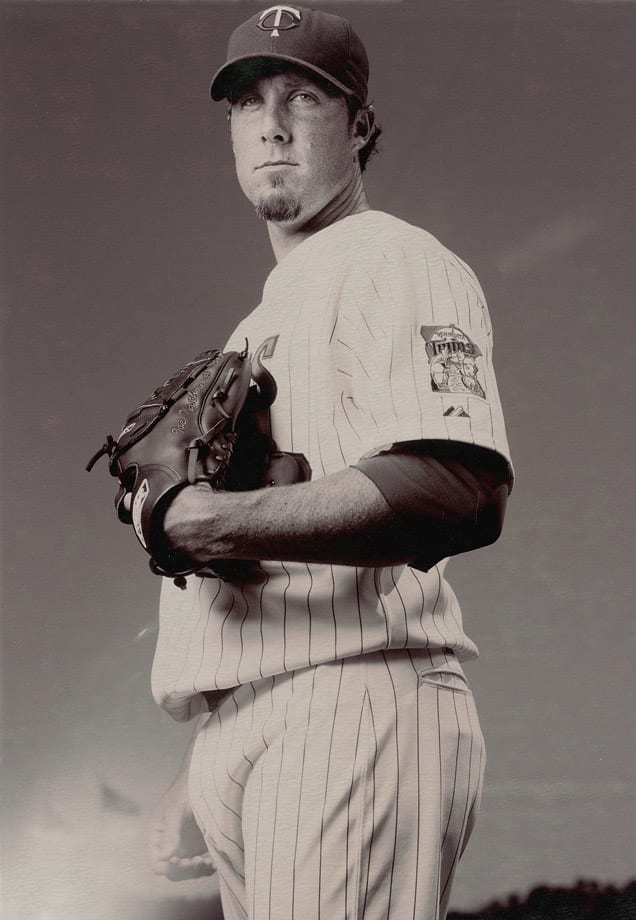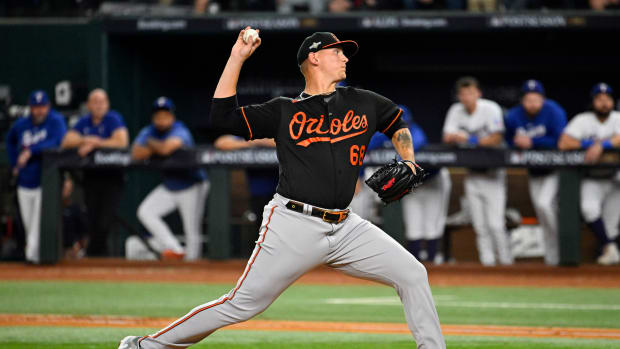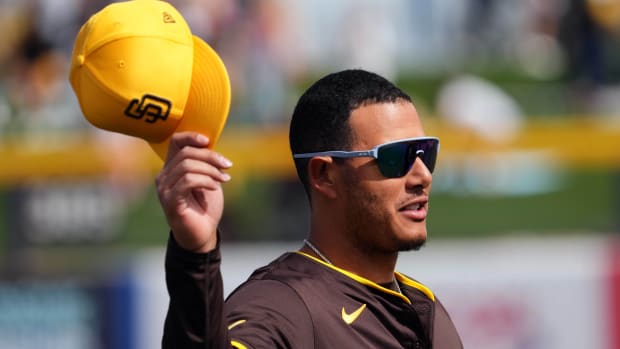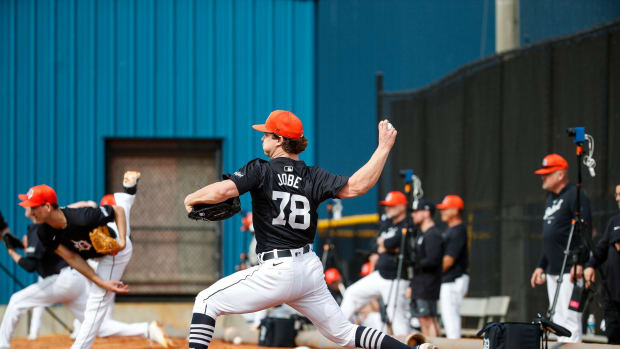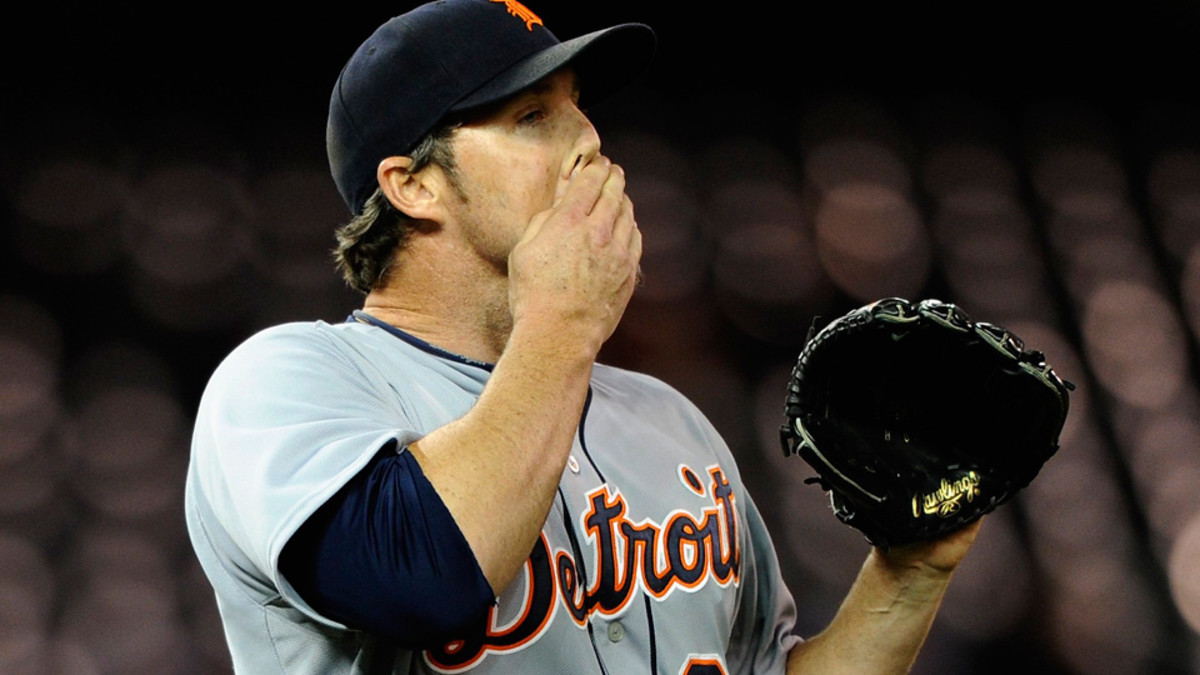
Nathan's season and career could be over after torn elbow ligament
Tigers closer Joe Nathan may have thrown his last major league pitch. Nathan, who had been placed on the 15-day disabled list on April 9 for what was then believed to be a flexor strain in his pitching elbow, cut his rehab appearance for Triple A Toledo short on Wednesday after experiencing a pain that he said felt “like I broke my arm.” That pain, it was revealed on Thursday morning, was the ulnar collateral ligament in his elbow tearing. The injury has ended the 40-year-old Nathan’s season, and it very likely spells the end of his career.
Nathan will have Tommy John surgery to repair the torn ligament, as well as to repair a torn flexor pronator. While he wouldn’t be the oldest pitcher to return from Tommy John surgery to the majors were he to do so at some point next season, the likelihood of him doing so seems slim at this point. One key reason for that is that Nathan will have to find a team willing to give him a chance. His current contract with the Tigers will expire after this season since, in the wake of this injury, there is no chance of Detroit picking up his $10 million option for 2016.
The post-Tommy John surgery calculus that is changing the game
Beyond that, Nathan was lousy last year when his arm was ostensibly healthy, posting his worst strikeout and walk rates (8.4 and 4.5 per nine innings, respectively), WHIP (1.53), and ERA+ (82) since he emerged as a dominant reliever with the Giants in 2003. He also blew a career-high seven saves and earned a blown save or a loss in nine of his 62 appearances for the Tigers. Unless he rebounded significantly from that performance this season, it seemed entirely possible that this might have been his final season even if he had remained healthy. Now, his chances of pitching beyond '15 have gotten far slimmer.
Nathan was exactly 40 years and five months old on Wednesday when he suffered his injury. Per Baseball Heat Maps’ definitive list of Tommy John recipients, only Jose Contreras (40 years, six months), John Franco (41 years, six months) and Jamie Moyer (48) were older when they had the surgery. All three did return to the major leagues thereafter, but only Franco lasted more than ten games, and he was never the same pitcher as he was before the surgery, posting a 4.65 FIP in parts of three seasons with the Mets and Astros.
Nathan is also, as far as we know, the first over-40 pitcher to have the surgery a second time; his UCL was previously repaired in March 2010. Last spring, when Brandon Beachy, Kris Medlen and Jarrod Parker were each headed for their second Tommy John surgeries, I looked at the track records of previous two-time recipients and found very little encouragement for starting pitchers of any age. Relievers have had more success returning from a second surgery in general—look no further than Nathan’s replacement as closer in Detroit, Joakim Soria, who has posted a 125 ERA+ in 82 games since his second Tommy John surgery in April 2012.
For Athletics, unassuming Vogt is team's perfect representative
No pitcher, however, has come back at Nathan’s advanced age. Soria won’t turn 31 until late May, and the big success story among two-time recipients remains Royals righty Jason Frasor, who had his first surgery in college in 1998 and his second prior to his age-23 season before putting together a solid 12-year major league career uninterrupted by major injury. Perhaps the most similar case to Nathan’s is that of former closer Jason Isringhausen, who had the surgery repeated at the age of 36, returned for his age-38 season and appeared in 103 games in that season and the next. However, Isringhausen was a below-average pitcher in both post-second-surgery seasons, compiling a 92 ERA+ and 4.69 FIP before retiring at the age of 40.
Even if Nathan does work his way all the way back to the major leagues, which would be unlikely to happen before the second half of next season even in the best-case scenario, he’s unlikely to recover his ability to be an elite closer. One could argue he hasn’t had that ability since 2013. The myriad career-lows mentioned in connection with Nathan’s '14 season above were in part the result of his declining velocity: The average speed of his four-seam fastball dipped below 93 miles per hour last year, per BrooksBaseball.net. That marked the second straight year that he had lost speed after appearing to return to his pre-surgery ability in '12 (when he averaged 94.7 mph on his four-seamer), with '13 representing his lowest average velocity in the seven seasons (dating back to 2007) in Brooks’ data. Perhaps that was an early indication of the coming collapse of his elbow, but however you frame it, it seems clear that Nathan was close to the end even before his injury, which has served less to interrupt a thriving career than to bring it to an end more suddenly and dramatically than expected.
Has horrible start already doomed Brewers to a season in the basement?
As for the Tigers’ bullpen, Soria has thus far thrived in the closer role, converting all five of his save opportunities and allowing just one run and one walk in eight appearances on the year. Last year, in his first full season following his second Tommy John surgery, Soria converted 18 of 20 save opportunities for the Rangers and Tigers, posting outstanding peripherals (9.7 strikeouts per nine, 1.2 walks per nine, 8.00 strikeout to walk ratio) and a 2.09 Fielding Independent Pitching figure. Having recovered his pre-surgery velocity and being less dependent on velocity in general, Soria looks to be a significant upgrade at the closer for Detroit. The trouble is that losing Nathan and limiting Soria to the closer role makes an already thin Tigers bullpen significantly weaker in the often more-important set-up innings.
Al Alburquerque may never have blown a save in his career, but his 60 walks in 110 2/3 innings and 3.91 FIP since the start of the 2013 season are hardly numbers you want to see from your primary set-up man. Joba Chamberlain has devolved into an undistinguished middle reliever and has struggled with his velocity thus far this season. The only other righty in the Detroit bullpen at the moment is 24-year-old rookie Angel Nesbitt, who split '14 between Class A and Double A and has yet to enter a game this year with less than a four-run differential in the score.
Soon-to-be–24-year-old lefty Ian Krol is purely a matchup reliever, with righties having hit .317/.377/.612 in 155 plate appearances against him in his major league career. Fellow lefty Blaine Hardy handled righties just fine as a 27-year-old rookie last year, but he didn’t make the team out of camp and, since replacing Nathan on the roster, he has been hit hard in four appearances. Flamethrowing righty Bruce Rondon, who is working his way back from both March 2014 Tommy John surgery and more recent biceps tendinitis, has yet to work breaking pitches into his bullpen sessions and likely won’t be an option for the major league team for at least another month.
Marlins manager Redmond already on hot seat after rough start to 2015
The Tigers' other options, both on the 40-man roster and beyond, are similarly underwhelming, all of which could make veteran lefty Tom Gorzelanny—the one notable addition the team made to the bullpen this off-season—a key arm for Detroit. A former starter and occasional swing man, the 32-year-old Gorzelanny is effective against hitters on both sides of the plate and could be important both as a set-up man and as a consumer of innings. The Tigers may also need to re-purpose some of their rotation overflow in the bullpen, as they did to great effect with Drew Smyly in 2013. However, Justin Verlander’s triceps strain will continue to undermine those efforts for some time, as the former ace currently has no timetable to return to the Tigers’ rotation.
Given his performance last year, Nathan may not have improved the Tigers' bullpen situation. As a result, this can’t be said to be a particularly harsh blow for Detroit, which couldn’t have expected much from Nathan to start. Still, what little chance there was that he would rebound from his dismal 2014 is now gone, throwing the Tigers’ weak effort to improve a unit that had the fourth-worst bullpen ERA in baseball last year at 4.29 into a harsh light.































